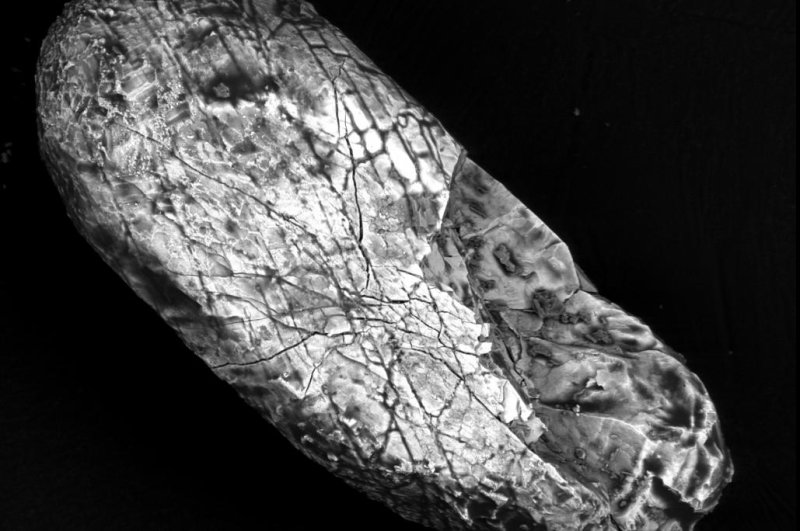A younger zircon crystal collected from the Sudbury impact crater in Ontario, Canada. New research suggests such crystals are indistinguishable from zircons dated to 4 billion years ago. Photo by Gavin Kenny/Trinity College Dublin
DUBLIN, Ireland, May 5 (UPI) -- Researchers in Europe say they have uncovered the origins of the world's oldest crystals. The findings may have significant implications for scientists' understanding of Earth's early evolution.
A small sample of tiny crystals are the only evidence scientists have of a newly born Earth. The crystals, known as zircons, are roughly the width of a human hair and are dated at 4 billion years old.
Some studies have claimed the zircons reveal evidence of water on the primordial Earth. Understandably, there's keen interest in these ancient rocks among geologists and planetary scientists.
But until now, there hasn't been a definitive explanation for where the rocks came from or how they formed.
Recently, a team of researchers led by Gavin Kenny, a geologist at Trinity College Dublin, used scanning electron microscopes to prove some younger zircon crystals, known to have formed in impact craters, are indistinguishable from the more ancient crystals. The finding suggests at least some of the ancient crystals formed in impacts, and not during tectonic plate activity as previously thought.
"Given the fact that our planet suffered more asteroid impacts early on than it has in relatively recent times, this strongly suggests that many of the oldest crystals known to man could have formed in violent impact crater settings," researchers explained in a news release.
In their new paper on the breakthrough -- published in the journal Geology -- Kenny and his colleagues argue that, while not all ancient zircons were formed the same way, "at least some could also have crystallized in melt sheets caused by intense meteorite bombardment of the early, hydrosphere-covered protocrust."















